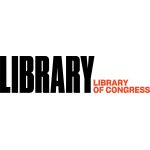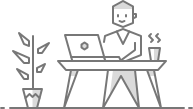
Library of Congress
With millions of books, films and video, audio recordings, photographs, newspapers, maps and manuscripts in its collections, the Library of Congress preserves and provides access to a rich, diverse and enduring source of knowledge to inform, inspire and engage you in your intellectual and creative endeavors.
Learners & Creatives Welcomed!
Fellowships, internships, residencies, and volunteer opportunities open the doors of America's library to life-long learners from teens to retirees, providing unprecedented access to the Library of Congress' world-class collections and staff.
A variety of opportunities are available for virtual and onsite experiences. Learn more on our Internship and Fellowship portal.
Company Information
The Library of Congress (LOC) is the world’s largest library, offering access to the creative record of the United States — and extensive materials from around the world — both on-site and online. The Library has millions of items including books, recordings, photographs, maps and manuscripts in its collections. It is the main research arm of the U.S. Congress and the home of the U.S. Copyright Office.
Website https://www.loc.gov/careersCompany History
Founded in 1800 to serve the reference needs of Congress, the Library has grown into an unparalleled treasure house of knowledge and creativity. On April 24, 1800, President John Adams signed the bill that moved the seat of government from Philadelphia to the new capital city of Washington, D.C., and created a reference library for congressional use. The bill provided, among other items, $5,000 for “the purchase of such books as may be necessary for the use of Congress.”
The Library’s original collections were housed in the new Capitol building until August 1814, when British troops invaded Washington and set fire to the Capitol, the White House and other government buildings. The small congressional library of some 3,000 volumes was lost in the fire. Within a month, former President Thomas Jefferson, living in retirement at Monticello, offered as a replacement his personal library, accumulated over a span of 50 years. On January 26, 1815, Congress accepted Thomas Jefferson’s offer and appropriated $23,950 for the collection of 6,487 books. In offering his library to Congress, Jefferson wrote, “I do not know that it contains any branch of science which Congress would wish to exclude from their collection; there is, in fact, no subject to which a Member of Congress may not have occasion to refer.” This wide-ranging Jefferson library became the foundation for a great national library. By 1851, the collection, still housed in the Capitol, had grown to 55,000 volumes. A serious fire in the Capitol on Christmas Eve of that year destroyed 35,000 volumes, including two-thirds of Jefferson’s library. (The Library has been reassembling copies of the lost editions of the works from the Jefferson library.)
In 1897, the Library moved from the Capitol to its own building nearby, and it now occupies three buildings on Capitol Hill. After a decade-long renovation, the magnificently restored Thomas Jefferson Building reopened to the public in May 1997. Additional large-scale collection storage modules were added at Fort Meade, Md., beginning in 2002. A modern facility for sound, film and video storage and preservation, the Library of Congress Packard Campus for Audio Visual Conservation, opened in Culpeper, Va., in 2007. In the early 1990s, the Library embarked on a program to make its incomparable collections more widely available to the public on the Internet.
The Library’s website at loc.gov provides access to Library collections, exhibitions, catalog data, legislative information at Congress.gov and copyright information at Copyright.gov. The Library's site is among the most visited of all federal web addresses.
No job openings
